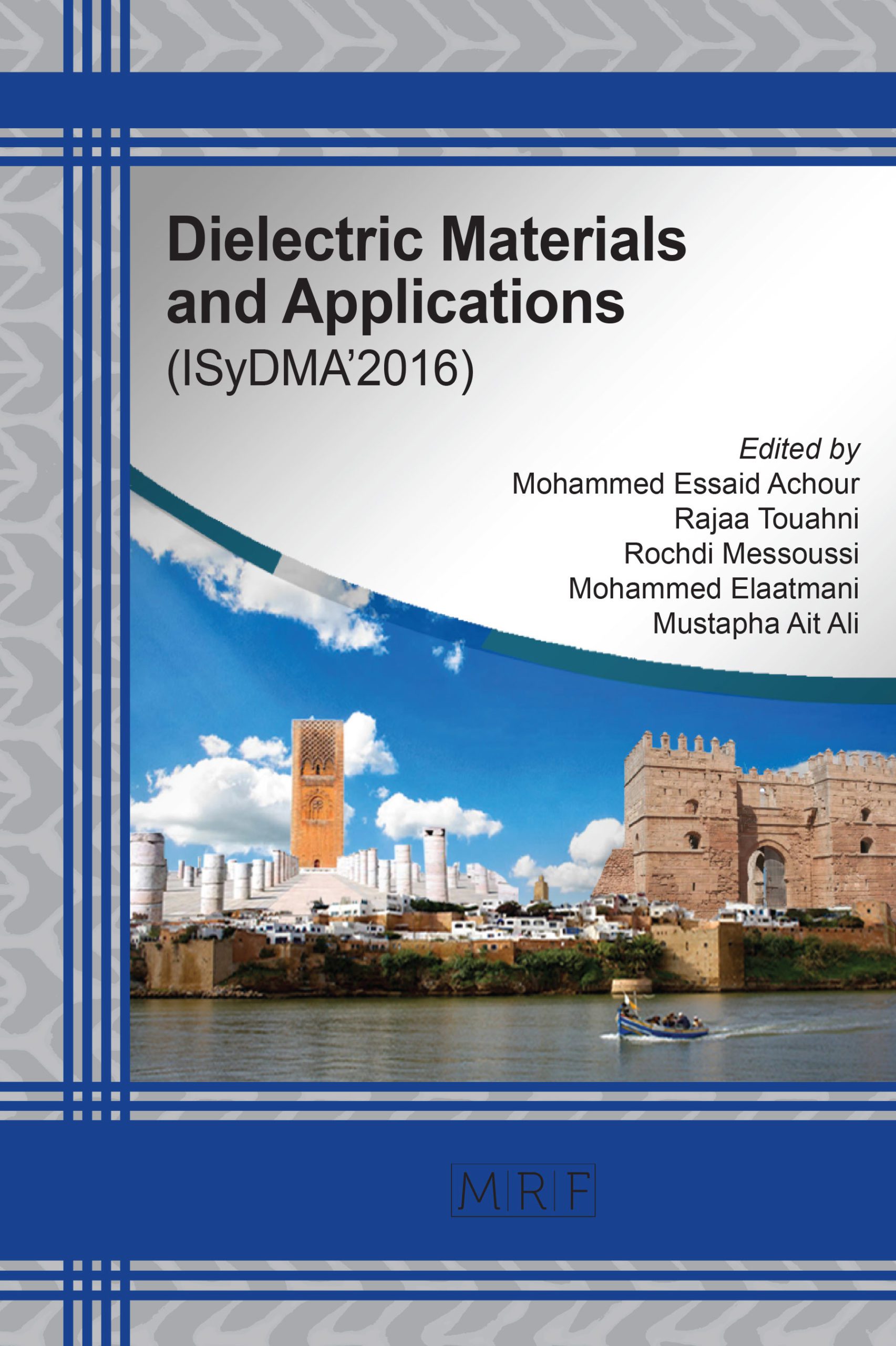A. ABOULOUARD, A. JOUAITI, B. ELHADADI, M. ADAR
Abstract. A computer simulation and calculation method have been proposed in this work to provide the effect of temperature on dye sensitized solar cells (DSSCs).the result shows that the temperature has an effect on the open circuit voltage and efficiency.
Keywords
Dye Sensitized Solar Cells, Simulation, Temperature
Published online 12/10/2016, 4 pages
Copyright © 2016 by the author(s)
Published under license by Materials Research Forum LLC., Millersville PA, USA
Citation: A. ABOULOUARD, A. JOUAITI, B. ELHADADI, M. ADAR, ‘Theoretical modelling of the temperature effect in dye sensitized solar cells’, Materials Research Proceedings, Vol. 1, pp 234-237, 2016
DOI: http://dx.doi.org/10.21741/9781945291197-58
The article was published as article 58 of the book Dielectric Materials and Applications
References
[1] B. M. O’Regan, and M. Grätzel, “A low-cost, high-efficiency solar cell based on dye-sensitized colloidal TiO2 films”, Nature, vol. 353, pp. 737-740,1991. http://dx.doi.org/10.1038/353737a0
[2] J. Nelson, in: A.J. Bard, M. Stratmann (Eds.), Encyclopedia of Electrochemistry, (Wiley-VCH, Weinheim, 6, 432 (2002).
[3] R. Gomez, and P. Salvador, “Photovoltage Dependence on Film Thickness and Type of Illumination in Nanoporous Thin Film Electrodes According to a Simple Diffusion Model”, Sol. Energy Mater. Sol. Cells vol. 88, pp. 377–388 ,2005. http://dx.doi.org/10.1016/j.solmat.2004.11.008
[4] S. Sodergren, A. Hagfeldt, J. Olsson ,and S. E. Lindquist,‘‘Theoretical Models for the Action Spectrum and the Current-Voltage Characteristics of Microporous Semiconductor-Films in Photoelectrochemical Cells’’, J. Phys. Chem. vol. 98, pp. 5552–5556,1999. http://dx.doi.org/10.1021/j100072a023
[5] M. Ni, M. K. H. Leung, D. Y. C. Leung, and K. Sumathy, ‘‘An Analytical Study of Porosity Effect on Dye-Sensitized Solar Cell Performance,’’ Sol. Energy Mater. Sol. Cells, vol. 90, pp. 1331–1344, 2006. http://dx.doi.org/10.1016/j.solmat.2005.08.006
[6] N. Meng, M. K. H. Leung, and D. Y. C. Leung,”Theoretical Modelling of the Electrode Thickness on Maximum Power Point of Dye-Sensitized Solar Cell”, The Canadian Journal of Chemical Engineering, vol. 86, pp. 35-42, 2008. http://dx.doi.org/10.1002/cjce.20015
[7] G Rothenberger,D. Fitzmaurice, and M. Gratzel, ‘‘Optical Electrochemistry. 3. Spectroscopy of Conduction-Band Electrons in Transparent Metal-Oxide Semiconductor-Films- Optical Determination of the Flat-Band Potential of Colloidal Titanium-Dioxide Films,’’ J. Phys. Chem, vol. 96, pp. 5983–5986, 1992. http://dx.doi.org/10.1021/j100193a062
[8] J. Ferber, and J. Luther, ‘‘Modeling of Photovoltage and Photocurrent in Dye-Sensitized Titanium Dioxide Solar Cells,’’ J. Phys. Chem. vol. B 105, pp. 4895–4903, 2001.
[9] J. Lee, J.G. M. Coia, and N. S. Lewis, ‘‘Current Density Versus Potential Characteristics of Dye-Sensitized Nanostructured Semiconductor Photoelectrodes. 2. Simulation,’’ J. Phys. Chem. vol. B 108, pp. 5282–5293, 2004.
[10] L. Dloczik, O. Ileperuma, I. Lauermann, L. M. Peter, E. A. Ponomarev, G. Redmond, N. J. Shaw, and I. Uhlendorf, ‘‘Dynamic Response of Dye-Sensitized Nanocrystalline Solar Cells: Characterization by Intensity Modulated Photocurrent Spectroscopy’’, J. Phys. Chem. vol. B 101, pp.10281–10289,1997.































